Introduction
Chicken wraps have become a popular lunch option since they combine taste, convenience, and nutrition. But as the movement toward better eating habits gains traction, the issue of “Are chicken wraps good for weight loss?” comes up. This article explores the health effects of chicken wraps and their importance for reaching weight loss objectives.
It’s critical to assess the nutritional makeup of chicken wraps before deciding if they are suitable for weight loss. Examining the proportions of the components—fiber-rich veggies, lean protein from chicken, and whole-grain wraps—allows us to determine how each one may affect calorie intake and satisfaction. It’s essential to comprehend these nutritional factors to make decisions supporting weight loss goals.
Moreover, utilizing the advantages of chicken wraps for weight loss requires thoughtful consumption habits. Developing mindful eating practices enables people to choose ingredients and portions in a way that supports their nutritional objectives. By implementing tactics like increasing the amount of vegetables, selecting whole-grain wraps, and reducing the amount of high-calorie sauces, readers may effectively navigate the world of chicken wraps while focusing on health and wellness.
This article attempts to provide readers with the information and understanding required to successfully include the popular dish—chicken wraps—into a weight reduction routine through a thorough examination of the nutritional subtleties and mindful consumption tactics related to this food. People can use the adaptability of chicken wraps as a useful addition to their dietary repertoire on the road to reaching their weight reduction goals by finding a balance between taste, nutrition, and portion control.
Understanding Chicken Wraps
Knowing what makes a chicken wrap clear is crucial when evaluating whether or not this well-liked dish is appropriate for weight reduction. Usually, a chicken wrap comprises multiple essential ingredients that are deftly bundled into a handy handheld container. Its major ingredient is cooked chicken that has been tenderly grilled or roasted to perfection. Lean protein is important for maintaining and repairing muscles throughout weight loss efforts. This high-protein basis helps maintain stable blood sugar levels, which supports sustained energy levels throughout the day and promotes sensations of fullness.
Various fresh vegetables accompany the chicken, giving the wrap more taste and nutrients. Not only can crisp lettuce, juicy tomatoes, crunchy bell peppers, and other vibrant vegetables improve the palate, but they also include vital vitamins, minerals, and dietary fiber important for general health and fullness. These nutrient-dense foods are great friends in the fight against weight loss since they help suppress cravings, regulate and ulate appetite, and encourage a feeling of fullness.
The nutritional profile of a chicken wrap can be greatly influenced by the style of wrap and condiments chosen, in addition to the protein and vegetable components. To help control extra fat and calories, choose lower-calorie condiments like salsa, hummus, or Greek yogurt-based sauces instead of high-calorie dressings or mayonnaise. Similarly, choosing whole-grain or whole-wheat wraps over their refined equivalents results in a higher fiber content, which supports digestive health and extends sensations of fullness. People can create chicken wraps that properly help their weight loss goals while tantalizing the taste senses by comprehending and optimizing these essential components.
Nutritional Breakdown
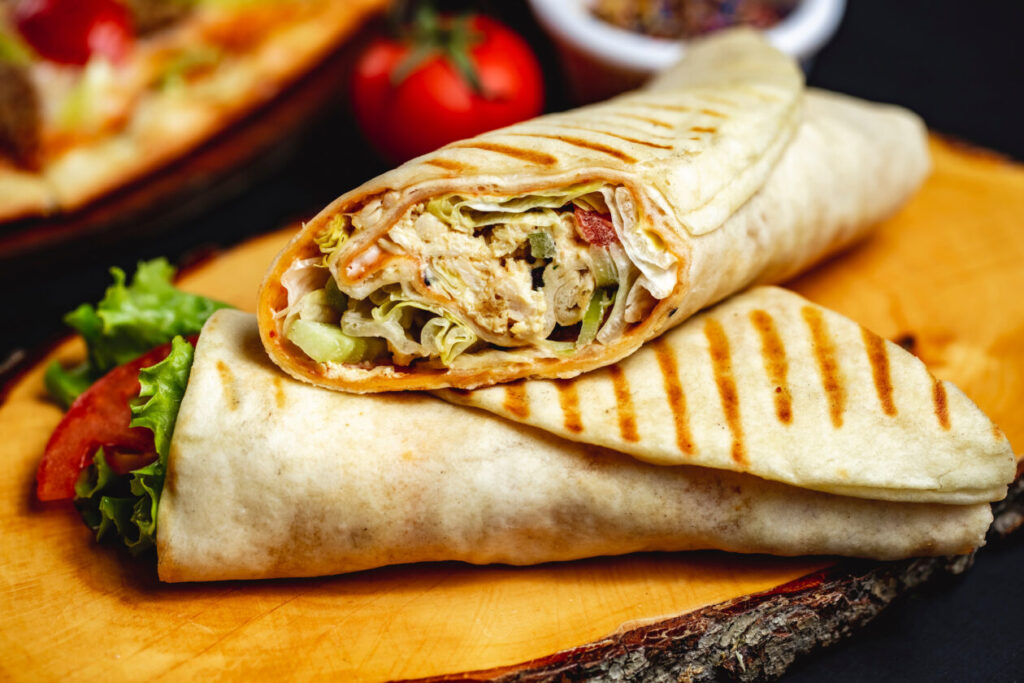
Examining the nutritional breakdown of chicken wraps is crucial to comprehending their potential for weight loss. Let’s read the nutritional content of a standard chicken wrap while considering important components like bread and whole-wheat wraps.
It is important to comprehend a chicken wrap’s nutritional makeup when determining whether it is appropriate for weight loss. A standard chicken wrap consists of a variety of essential nutrients, with an emphasis on lean protein and foods high in fiber. Adding grilled or roasted chicken gives you a good supply of protein for fullness and muscle repair. The variety of fresh veggies also provides essential vitamins, minerals, and dietary fiber that support general health and facilitate digestion.
To begin with, a single whole-wheat wrap has 110 calories, 2 grams of fat, 380 milligrams of sodium, 22 grams of carbohydrates, 5 grams of fiber, and 4 grams of protein. These wraps have a low-calorie count but a substantial dietary fiber content that promotes better digestion and prolongs feelings of fullness. Because of their high protein content, which also aids in satiety and muscle regeneration, they are an important part of a balanced diet.
It’s important to consider extra sauces and condiments when calculating a chicken wrap’s calorie value. While certain options, like mayonnaise or creamy sauces, may add excess fat and calories, others, like salsa, hummus, or Greek yogurt-based dressings, can improve flavor without substantially boosting calorie consumption. Choosing milder condiments will allow you to consume fewer calories without sacrificing flavor or satisfaction.
Conversely, 260 calories, 5g fat, 360 mg sodium, 46g carbs, 8g fiber, and 10g protein are found in two slices of whole-wheat bread. Whole-wheat bread has a far higher fiber content than the wrap, although having somewhat more calories. This increased fiber content can support weight control efforts and help regulate blood sugar levels. The higher protein level enhances nutritional value by supplying vital amino acids for optimum body function.
Analyzing the nutritional profiles of various wrap options gives important information about how they affect weight reduction objectives. A whole-wheat wrap, as opposed to regular white flour tortillas, has a higher fiber content and a lower glycemic index, which can help with increased sensations of fullness and stable blood sugar levels. A balanced and fulfilling lunch can also be achieved by using whole-wheat bread as an alternative base, boosting fiber consumption and offering a more significant supply of nutrients.
In conclusion, if made carefully, paying attention to ingredient selection and amount management, chicken wraps can be a wholesome and fulfilling choice for people trying to reduce weight. Lean protein, high-fiber foods, and lighter sauces are the key components that help people lose weight while still enjoying a satisfying meal.
Health Considerations
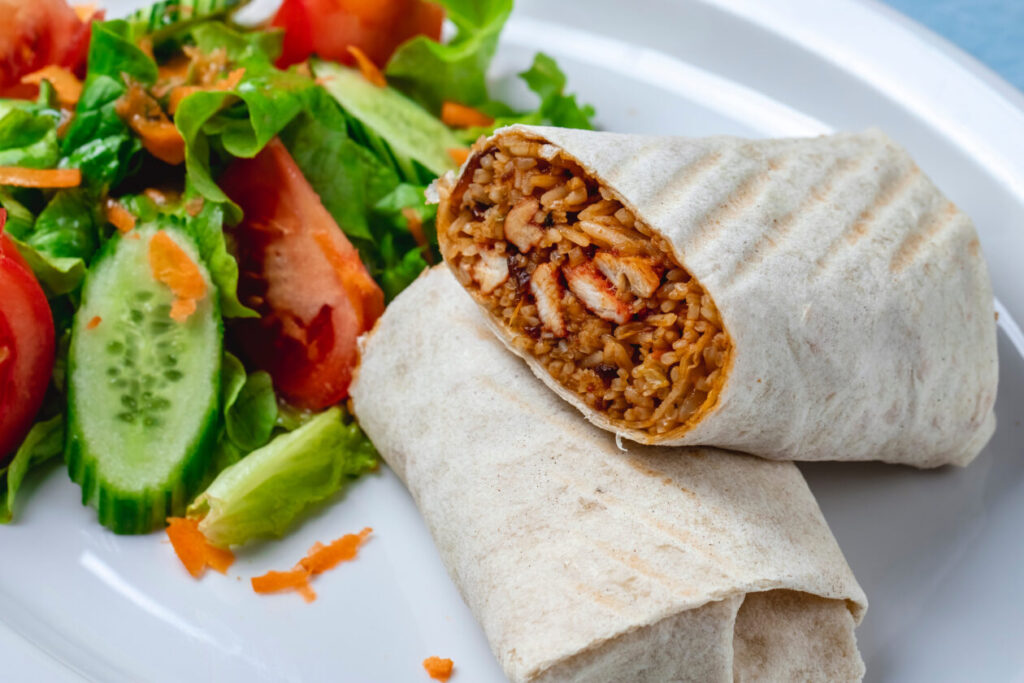
When thinking about whether or not chicken wraps are a good choice for weight loss, it’s important to examine the health risks associated with them, taking into account both the ingredients and the methods of preparation. The key is striking the right balance between taste and nutrition; even a basic wrap can become a wholesome, weight-loss meal with the right decisions.
Choosing the Right Wrap: Whole Wheat vs. Regular Tortillas
Selecting the right wrap is one of the most important steps in creating a health-conscious chicken wrap. In this category, whole wheat tortillas are the best option because they have more fiber and a lower glycemic index than tortillas made with refined flour. Stable blood sugar levels and satiety are facilitated by fiber, which is important for reducing cravings and sustaining energy levels during the day. Conversely, regular tortillas frequently need more nutritional punch than whole wheat varieties due to their lower fiber content and higher carbohydrate content, which may impede weight loss efforts.
Navigating Condiments and Portion Control
Creating a healthy chicken wrap involves more than selecting the right wrap; condiments are essential for enhancing flavor and nutritional content. You can improve flavor without sacrificing calories using healthier condiments like Greek yogurt-based dressings, salsa, or guacamole. On the other hand, foods like mayonnaise and creamy sauces can quickly increase caloric intake, so portion control should be used with caution. People can enjoy the flavor of condiments while maintaining a healthy weight by choosing them mindfully and in moderation.
To sum up, chicken wraps can be a satisfying and nutritious addition to a weight loss program when eaten sensibly and sensibly. Whole wheat wraps, healthy fillings, and moderation in condiments allow people to enjoy a tasty, guilt-free meal that helps them to a healthier lifestyle.
Chicken Wrap Recipes
These tasty and wholesome chicken wrap recipes will help you lose weight by fueling your body and pleasing your palate. These wraps, made with whole grains and loaded with veggies and lean protein, add a tasty twist to your nutritious diet.
- Grilled Chicken and Veggie Wrap
This hearty wrap, full of crispy bell peppers, juicy tomatoes, crisp lettuce, and grilled chicken breast strips, is a great way to start the day. Top with a spicy vinaigrette and encase everything in a whole wheat tortilla for a filling lunch that will give you energy for the rest of the day.
- Mediterranean Chicken Wrap
This colorful wrap will take your taste buds to the Mediterranean coast. Stuff a whole grain wrap with diced cucumbers, cherry tomatoes, creamy hummus, and sharp feta cheese. Add a squeeze of lemon juice and a pinch of oregano for an additional taste boost.
- Asian-Inspired Chicken Lettuce Wraps
Try these Asian-inspired lettuce wraps for a light and low-carb option. When the chicken breast is cooked, sauté it in a pan with chopped ginger, garlic, and soy sauce. Then, spoon it into crisp lettuce leaves. For a crunchy and filling dinner, top with sliced green onions, shredded carrots, and sesame seeds.
- Buffalo Chicken Wrap
Enjoy your cravings with this hot buffalo chicken wrap without letting them stop you from losing weight. Layer crisp romaine lettuce, diced celery, creamy Greek yogurt, or blue cheese dressing on a whole wheat tortilla, then toss in shredded chicken breast coated with your preferred buffalo sauce. Enjoy the strong flavors guilt-free by rolling it up.
- Veggie-Packed Chicken Caesar Wrap
Give a traditional favorite a nutritious makeover with this veggie-rich chicken Caesar wrap. Stuff a whole grain wrap with cucumber slices, cherry tomatoes, crisp romaine lettuce, and grilled chicken breast slices. For a filling, tasty, and nutritious dinner, drizzle with a light Caesar dressing and top with grated Parmesan cheese.
There are many options to suit every palate and dietary preference in these varied and delicious chicken wrap recipes. These wraps will become a regular part of your weight loss journey, whether craving something light and refreshing or hearty and satisfying. So grab a fork and prepare to indulge in deliciousness without feeling guilty about these tasty creations.
Tips for Weight Loss
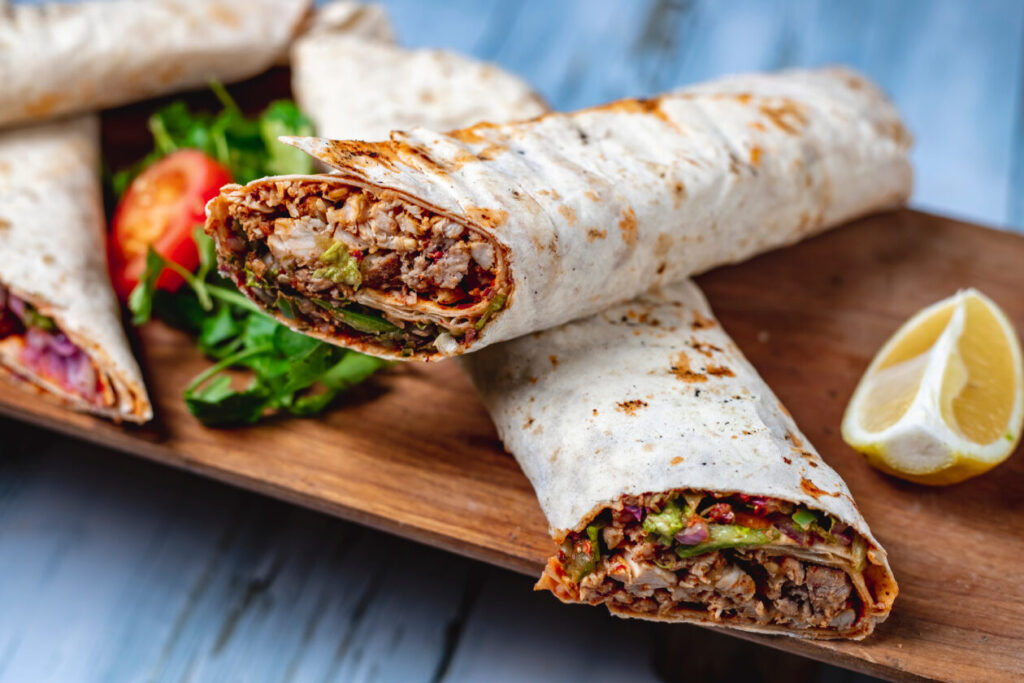
Is chicken wrap good for weight loss? It depends on how you approach them. The following useful advice will help you maximize the benefits of chicken wraps in your weight loss journey:
- Choose Whole Grain Wraps: Opt for whole grain or whole wheat wraps instead of white flour options. Wraps made with whole grains provide more nutrients and fiber, which can improve digestion and help you feel fuller for longer.
- Load Up on Vegetables: Make your chicken wrap a veggie-packed delight by loading it with colorful vegetables like lettuce, spinach, bell peppers, cucumbers, and tomatoes. Vegetables not only provide necessary vitamins and minerals, but they also help you feel fuller without consuming a lot of calories.
- Mind Your Portions: Consider the serving sizes when making or consuming chicken wraps. Oversized wraps with lots of fillings can be a healthy option, but they can also add up in calories fast. Try to balance the amount of protein, veggies, and wrap; if the portion is too big, consider sharing it with someone else or putting half away for later.
- Watch the Condiments: Pay attention to the sauces and condiments on your chicken wrap. Choose lighter options, such as creamy sauces, or heavy mayonnaise, such as salsa, Greek yogurt-based dressings, or hummus. These less-fattening substitutes can enhance taste without adding excessive calories or fat.
- Practice Mindful Eating: Slow down and savor each bite of your chicken wrap. Eating with awareness can help you recognize when your body is full and enjoy the flavors and textures of your food. Steer clear of distractions like screens and eating on the go and concentrate on taking leisurely time to savor your meal.
By applying these suggestions to your chicken wrapper diet, you can support your weight loss objectives and make better decisions. You can eat delicious chicken wraps that nourish your body and enhance your general well-being by selecting wholesome ingredients, controlling your portions, and engaging in mindful eating.
Comparing Wraps to Other Lunch Options
It’s important to weigh the pros and cons of chicken wraps for weight loss against other popular lunch options like salads and sandwiches. We can ascertain which choice might be more conducive to achieving our weight loss objectives by assessing energy density, nutritional worth, and fullness.
1. Calorie Content and Nutritional Value: Lean protein, veggies, and whole-grain wrappers make up chicken wraps, which provide a well-rounded combination of nutrients. Chicken wraps are frequently lower in calories and fat than sandwiches made with white bread and high-calorie ingredients like cheese and mayonnaise. Furthermore, wraps offer a chance to add vibrant vegetables, boosting the meal’s nutritional value and providing vital vitamins, minerals, and dietary fiber.
2. Satiety Factor: This measures how full and content you feel after eating. Because chicken wraps are high in protein and fiber, which help prevent hunger between meals, they can make a filling lunch choice. However, the amount of food consumed and the kinds of ingredients used can affect how stuffed you feel. Even though they’re sometimes thought of as a lighter option, salads might not always be as satisfying if they don’t contain enough protein or good fats.
3. Customization and Versatility: Chicken wraps’ adaptability and customization possibilities are two main benefits. You can customize wraps to your tastes by changing the type of protein, veggies, and condiments used. Due to its adaptability, countless combinations can accommodate various dietary requirements and palate preferences. On the other hand, salads can be more versatile regarding ingredient selection, but they might not be as portable and convenient as wraps—especially for lunches consumed on the run.
Conclusion: Because of their lower calorie count, balanced nutrition, and satiety factor, chicken wraps are a better option for weight loss when compared to other lunch options like sandwiches and salads. People can have a filling and healthy dinner that effectively supports their weight loss goals by choosing whole-grain wraps and adding lean protein and lots of veggies. To get the most out of chicken wraps as part of a weight loss plan, it’s important to consider portion sizes and ingredient selection.
Are Chicken Wraps Good for Weight Loss?
Short Answer:
Yes, chicken wraps can be a beneficial part of a weight loss diet when prepared with healthy ingredients and portioned appropriately.
In-Depth Analysis:
Chicken wraps offer several advantages for individuals aiming to lose weight. Firstly, they provide a convenient and portable meal option, making them suitable for busy schedules. Chicken wraps can be nutritious and satisfying when made with whole-grain wraps, grilled chicken breast, and plenty of vegetables. Including lean protein from the chicken helps promote satiety and preserve muscle mass during weight loss efforts. Additionally, vegetables add essential vitamins, minerals, and dietary fiber, which contribute to overall health and support weight management by promoting feelings of fullness.
It’s important to pay attention to portion sizes and the choice of condiments when enjoying chicken wraps for weight loss. Opting for lighter condiments such as salsa, Greek yogurt-based sauces, or hummus can help reduce calorie intake while enhancing flavor. Moreover, practicing portion control by filling wraps with appropriate protein and vegetables can help prevent overeating and support calorie control. By incorporating chicken wraps into a balanced diet alongside other nutritious foods, individuals can enjoy a varied and satisfying approach to weight loss.
In summary, chicken wraps can be a valuable component of a weight loss plan when prepared mindfully with nutrient-rich ingredients and portioned appropriately. Individuals can create satisfying meals that support their weight loss goals by choosing whole-grain wraps, lean protein sources like chicken, and abundant vegetables. However, it’s essential to be mindful of portion sizes and condiment choices to avoid excess calories. Overall, incorporating chicken wraps into a balanced diet can contribute to successful weight loss efforts while providing convenience and flavor.
FAQs About Chicken Wraps and Weight Loss
1. Can I lose weight by eating chicken wraps?
You can lose weight while incorporating chicken wraps into your diet, provided they are made with nutritious ingredients and portioned appropriately. Opt for whole-grain wraps, lean protein sources like grilled chicken breast, and plenty of vegetables to create a balanced and satisfying meal conducive to weight loss.
2. Are wraps good for weight loss?
Wraps can be a good option for weight loss when made with wholesome ingredients and balanced nutrition. Choosing whole-grain wraps and filling them with lean proteins, vegetables, and healthy fats can provide a nutritious and filling meal that supports weight loss goals.
3. Is eating chicken with wraps healthy?
Eating chicken with wraps can be healthy, especially with nutrient-rich ingredients like vegetables and whole grains. Chicken is a lean protein source that provides essential nutrients while helping to promote satiety and muscle preservation during weight loss efforts.
4. Are chicken snack wraps healthy?
The healthiness of chicken snack wraps depends on their ingredients and preparation methods. Opting for grilled or roasted chicken with whole-grain wraps and various vegetables can make chicken snack wraps a nutritious option for a quick and satisfying meal or snack.
5. Is it OK to eat chicken wraps every day?
While chicken wraps can be a healthy part of a balanced diet, it’s important to vary your food choices to ensure you get a wide range of nutrients. Eating chicken wraps daily may limit diversity in your diet, so it’s advisable to incorporate other nutritious foods.
6. Is a wrap considered junk food?
Wraps are not inherently junk food, but the ingredients used to make them can vary widely in nutritional quality. Opting for whole-grain wraps filled with lean proteins, vegetables, and healthy fats can make wraps a nutritious and satisfying meal option.
7. Can I eat chicken during weight loss?
Chicken can be a valuable part of a weight loss diet due to its high protein content and relatively low calorie count. Incorporating lean protein sources like chicken into meals can help promote satiety, preserve muscle mass, and support weight loss efforts.
8. How much chicken should I eat per day to lose weight?
The amount of chicken you should eat daily to lose weight depends on various factors such as your calorie needs, activity level, and overall dietary intake. As a general guideline, aim for a palm-sized portion of chicken (about 3-4 ounces) per meal as part of a balanced diet.
9. Do body wraps burn calories?
While body wraps may promote temporary water loss and skin tightening, they do not burn calories or promote fat loss. To effectively burn calories and lose weight, focus on a balanced diet, regular exercise, and overall lifestyle habits.
10. How to lose belly fat?
Losing belly fat requires a combination of a balanced diet, regular exercise, and lifestyle modifications. Focus on eating a nutrient-rich diet, engaging in cardiovascular and strength training exercises, managing stress levels, and getting adequate sleep to support overall health and reduce belly fat.
11. Can I eat 1 kg chicken a day?
Consuming 1 kg of chicken daily may provide excessive protein and calories, depending on your needs and dietary preferences. It’s important to vary your protein sources and incorporate various foods into your diet for optimal nutrition and overall health.
12. Do eggs help in weight loss?
Eggs can be a nutritious part of a weight loss diet due to their high protein content and essential nutrients. Incorporating eggs into meals can help promote satiety, regulate appetite, and support muscle preservation during weight loss efforts.
13. Is two chicken breasts too much?
The appropriate portion size of chicken breasts depends on various factors, such as your calorie needs, activity level, and overall dietary intake. Generally, two chicken breasts may provide more protein and calories than some individuals need, so it’s important to consider portion sizes and balance them with other food groups in your meals.
14. Chicken wrap sauce
When choosing a sauce for chicken wraps, choose lighter options such as salsa, Greek yogurt-based dressings, or hummus to add flavor without significantly increasing calorie intake. Be mindful of portion sizes and choose sauces with minimal added sugars and unhealthy fats.
15. Chicken wrap calories
The calorie content of chicken wraps can vary depending on the ingredients and portion sizes. A typical chicken wrap made with whole-grain wraps, grilled chicken breast, and vegetables may contain around 300-400 calories, but this can vary based on individual recipes and serving sizes.
16. Low-calorie high protein chicken wrap
To make a low-calorie, high-protein chicken wrap, use whole-grain wraps, grilled or roasted chicken breast, plenty of vegetables, and a light dressing or sauce. This combination provides a satisfying meal rich in protein and fiber while keeping calorie intake in check.
17. Grilled chicken ranch wrap Wendy’s
Wendy’s grilled chicken ranch wrap is a menu item that includes grilled chicken breast, lettuce, tomato, shredded cheddar cheese, and creamy ranch dressing wrapped in a flour tortilla. While it can be a convenient option for a meal on the go, be mindful of portion sizes and the overall nutritional content, as some fast-food wraps may be higher in calories, sodium, and unhealthy fats.
Conclusion
In conclusion, chicken wraps can benefit a diet plan for losing weight when made carefully and with wholesome ingredients. People can make satisfying meals that support their weight loss goals and provide essential nutrients by choosing whole-grain wraps, lean protein sources like grilled chicken breast, and abundant fresh vegetables.
Making educated decisions about ingredients and portion sizes is crucial, with moderation and balance coming first. Chicken wraps can support weight loss goals and improve general health and wellness when included in a balanced diet with other wholesome foods.
In conclusion, chicken wraps provide flexibility and convenience for those concerned about their health and looking for wholesome, tasty dinner options. People can benefit from chicken wraps as part of a balanced diet by emphasizing high-quality ingredients and mindful eating practices, which will help them achieve better health and well-being.
Reference
British Heart Foundation. (2016, June 14). Sauces Ooh saucy. Bhf.org.uk; British Heart Foundation. https://www.bhf.org.uk/informationsupport/heart-matters-magazine/nutrition/sugar-salt-and-fat/sauces-ooh-saucy
Calvo, T. (2021, April 24). Corn, Flour, or Whole Wheat: Which Type of Tortilla Is Healthier? Consumer Reports. https://www.consumerreports.org/health/nutrition-healthy-eating/which-type-of-tortilla-is-healthier-a2016218030/
Was this helpful?

Joseph Emb, RDN
Founder of StyleVitally.com | Registered Dietitian & Wellness Advocate
What I Cover:
I’m passionate about connecting nutrition science and everyday wellness to help people live healthier, more vibrant lives. I write about evidence-based nutrition, mindful eating, sustainable lifestyles, and holistic well-being at StyleVitally.com.
My Background:
The University of Texas in Austin, where I earned my Dietetics diploma, laid the groundwork for my nutrition and health career. My training and hands-on experience taught me the science and art of using nutrition to enhance health and well-being.
Professional Journey:
I’m an RDN with lots of experience. I’ve helped people seeking tailored nutritional recommendations in clinical settings and community outreach programs. My constant learning and professional development ensure that my recommendations are always based on the latest evidence.
Ethical Commitment:
My practice prioritizes integrity. My content is transparent and objective, following the most significant ethical standards. I can give my audience unbiased advice because I’m not affiliated with food businesses or industry associations. I want to help people make informed health decisions that match their values and ambitions.
Join Me on the Wellness Journey:
Join me on the path to vitality and well-being, whether facing nutritional issues, seeking sustainable lifestyle changes, or simply wanting a better, happier you. We’ll discover how diet, mindfulness, and holistic well-being can maximize your potential.


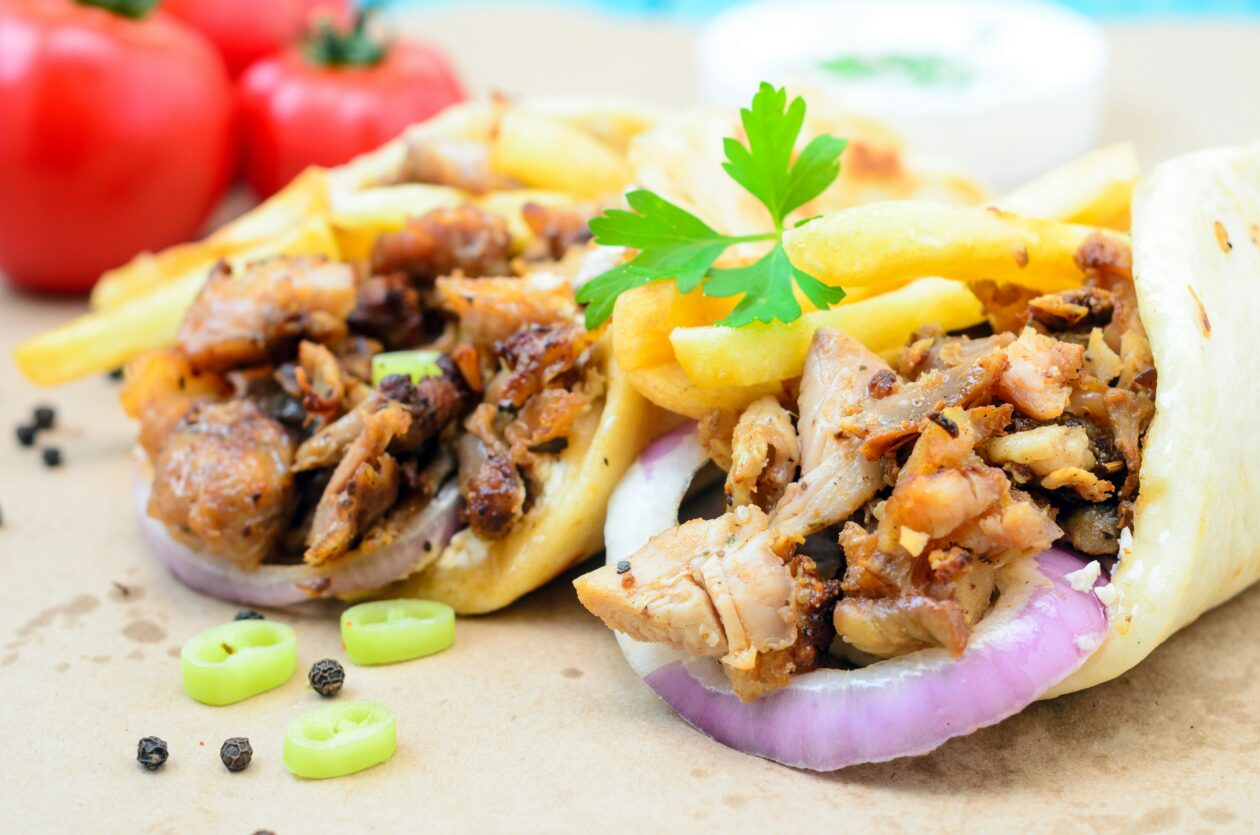




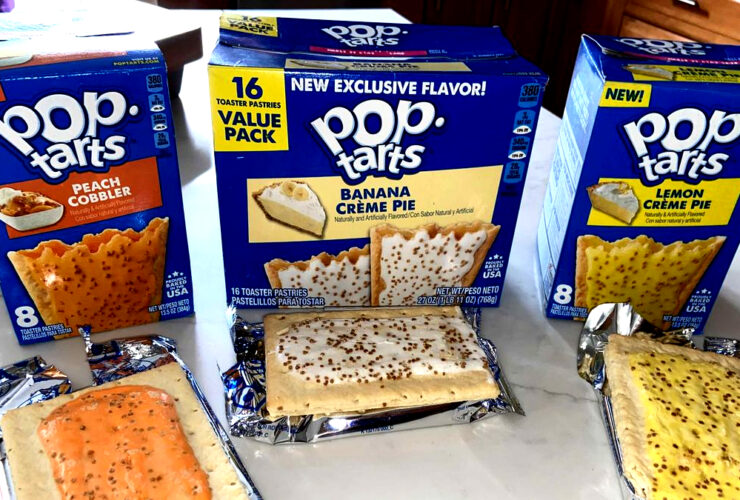


Leave a Reply
View Comments